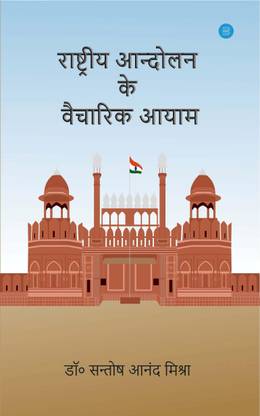Alluri Sitarama Raju: Tribal leader and great revolutionary of freedom struggle (4 July 1897- 7 May 1924)
Birth, family and early life
Alluri Sitarama Raju was born on 4 July 1897 in a small village Mogallu (Pandrangi according to some sources) in Visakhapatnam district of Andhra Pradesh. His family was a traditional Telugu Brahmin family. Father's name was Venkataram Raju and mother's name was Suryanarayani. His life became full of struggle due to the death of his father in childhood.
He received primary education in Madras, Rajahmundry and Visakhapatnam, but he was not much interested in formal education. In his youth, he became spiritual and shaped his thoughts by staying in contact with saints, yogis and revolutionaries.
A confluence of spiritual and revolutionary consciousness
Raju studied Indian scriptures, Upanishads, Ramayana and Bhagavad Gita in depth. Along with this, he was also influenced by Gandhiji's ideas. Seeing the unjust rule of the British and the atrocities being committed on the tribals, he decided that now only non-violence would not work - there is a need for armed rebellion.
He organized the tribal communities living in the forests and mountains, especially the Koya tribe, and trained them to fight against injustice. He became both their 'guru' and leader.
Ramo Pati Rebellion (1922–1924): An Organized Tribal Revolution
Reasons for the Rebellion:
The British Forest Act: This Act banned the tribals from going into the forest, cutting wood, farming and even hunting.
Unjust Tax System: The tribals were oppressed by taxes like land tax, animal tax, etc.
Exploitation and Oppression: The British soldiers and local landlords exploited the tribal people economically and physically.
Strategy of Rebellion:
Sitaram Raju adopted guerrilla warfare. He lived in the forests, raided police stations, looted arms, and warned officers to stop atrocities on tribals.
He attacked British posts at places like Chintapalli, Rajavomangi, and Krishnadevipeta.
He was extremely courageous and is said to have moved so fast in the forests that no one could catch him.
A mysterious and charismatic leader
Raju was considered an "incarnation of God". He used to make prophecies, had knowledge of Ayurvedic medicine, and led a highly disciplined life.
His attire was simple: he wore a dhoti, carried a kamandalu and a bow on his shoulder, and had long hair.
Martyrdom and legacy
The British government was extremely afraid of Raju. They announced a reward of ₹10,000 for information leading to his capture.
Eventually, the British, acting on a tip-off, captured him by deceit and shot him dead in the Coyaposi forest on 7 May 1924 after tying him to a tree. He was only 27 years old at that time.
Effect of his martyrdom:
The wave of rebellion intensified in the tribal areas.
India's freedom movement gained more energy in South India.
Even today, the tribal community remembers him with reverence by calling him "Manyam Veerudu" (Veer of the forest).
In his memory:
Alluri Sitarama Raju Memorial: A grand memorial has been built in his memory at Lambipady (Andhra Pradesh).
Indian Postage Stamp: The Government of India issued a postage stamp in his honor in 1986.
His 125th birth anniversary was celebrated by the Government of India in 2022, in which the Prime Minister announced special programs.
His thoughts and ideals are relevant even today
Protection of tribal rights
Spirit of equality and freedom
Combination of religion, service and sacrifice
Power of organized struggle
Conclusion
Alluri Sitarama Raju was one of those extraordinary fighters who dedicated his life for the nation. His sacrifice showed that people in every corner of India were yearning for freedom, no matter how remote or tribal area they lived in. His life still inspires us to fight against injustice, organize, and adopt the ideals of patriotism.













0 Comments
Thank you